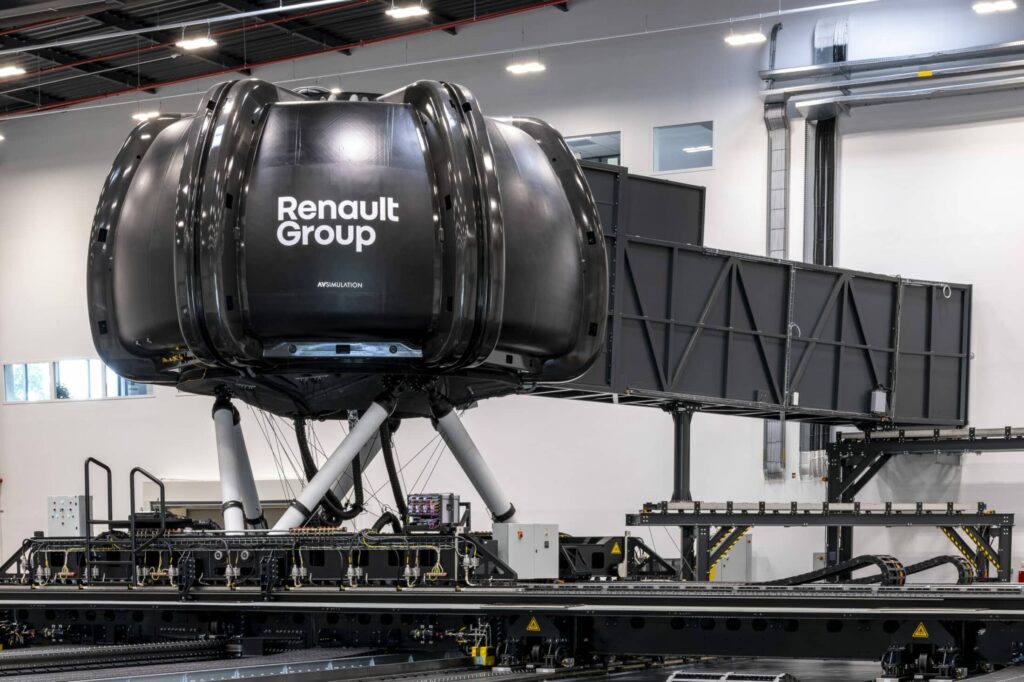CHALLENGE
In today’s saturated and fast-paced automotive industry, staying competitive means accelerating development cycles, reducing costs, and continuously integrating new technologies—all while maintaining the highest standards of safety and innovation.
Renault faced the challenge of designing and validating a brand-new electric Twingo in record time and at a competitive price. Traditional physical prototyping and test tracks take time and are too expensive to meet these objectives. The company needed a solution that would enable rapid design iteration, comprehensive system testing, and minimal reliance on physical builds.
SOLUTION
Renault integrated AVSimulation’s SCANeR software and cutting-edge simulation tools into their development process. These digital tools enabled Renault to create a highly detailed virtual twin of the Twingo, allowing engineers to interact with and test every component of the vehicle in a fully immersive, virtual environment.
A recent TF1 report highlighted how Renault is leveraging advanced simulation technologies—including AVSimulation’s SCANeR software and driving simulators—to streamline the creation and testing process of the new electric Twingo.
Using SCANeR, Renault engineers were able to test vehicle dynamics, ergonomics, and dashboard layout, without needing a physical prototype. This digital approach also supported advanced testing and validation of driver assistance systems, such as Automatic Emergency Braking (AEB), under a wide range of scenarios.
DESCRIPTION
At the Guyancourt Technocentre, the Twingo’s design process relies on augmented reality. In its physical form, the mock-up contains only four seats and a steering wheel. However, when wearing a VR headset, engineers and designers can fully explore the almost finished product.
“If you open the door, you can get onboard,” says design director Gilles Vidal. “What you see is the virtual car.”
“You get a very realistic view of all the volumes, details and buttons,” he adds.
To test the vehicle’s behavior, Renault uses ROADS, the world’s most powerful dynamic simulator, developed by AVSimulation. The platform is equipped with a 360° screen, hydraulic motion systems, and a full-scale cabin replica. The virtual environment inside ROADS ,powered by SCANeR, enables engineers to simulate real-world environments and test critical driving functions virtually.
“You can feel the simulator’s movements as if you were in a real car,” says Jacques Perot, an engineer assessing the cruise control system.
“You can feel the simulator’s movements as if you were in a real car,” says Jacques Perot, an engineer assessing the cruise control system.
To operate the ROADS simulator safely, it had to be anchored with 30-meter-deep concrete pillars and a 1.5-meter-thick slab—evidence of the immense forces and realism involved.
BENEFITS OF SCANeR
By using SCANeR, Renault achieved groundbreaking results in terms of development efficiency and technical performance.
This revolutionary approach enabled Renault to reduce development time by 50%, bringing the timeline down from four years to just two. The first physical prototype was completed in under a year, cutting traditional development milestones dramatically.
SCANeR’s virtual testing capabilities eliminated the need for multiple physical prototypes , allowing engineers to test everything from cockpit design to lighting and ADAS performance in a simulated environment.
The ROADS simulator, powered by SCANeR, allowed Renault to run complex driving scenarios and reduce crash test losses from 100 to just 10. This not only improved safety but also delivered substantial cost savings and reduced environmental impact by limiting physical waste and testing resources.
Through SCANeR’s advanced capabilities—including full digital twin validation, real-time ADAS evaluation, and immersive testing—Renault was able to remain agile, innovative, and competitive in an increasingly demanding market.
CONCLUSION
AVSimulation’s SCANeR software and high-fidelity simulation platforms are transforming the way leading automotive manufacturers like Renault design, test, and validate vehicles.
From digital prototyping to ADAS validation and driver behavior analysis, SCANeR supports the entire product lifecycle—delivering speed, precision, and safety at every step.
By replacing traditional, resource-intensive testing methods with virtual simulations, AVSimulation empowers OEMs to build smarter, safer, and more sustainable vehicles. Renault’s success with the new electric Twingo is a powerful example of how simulation is reshaping the future of mobility.



